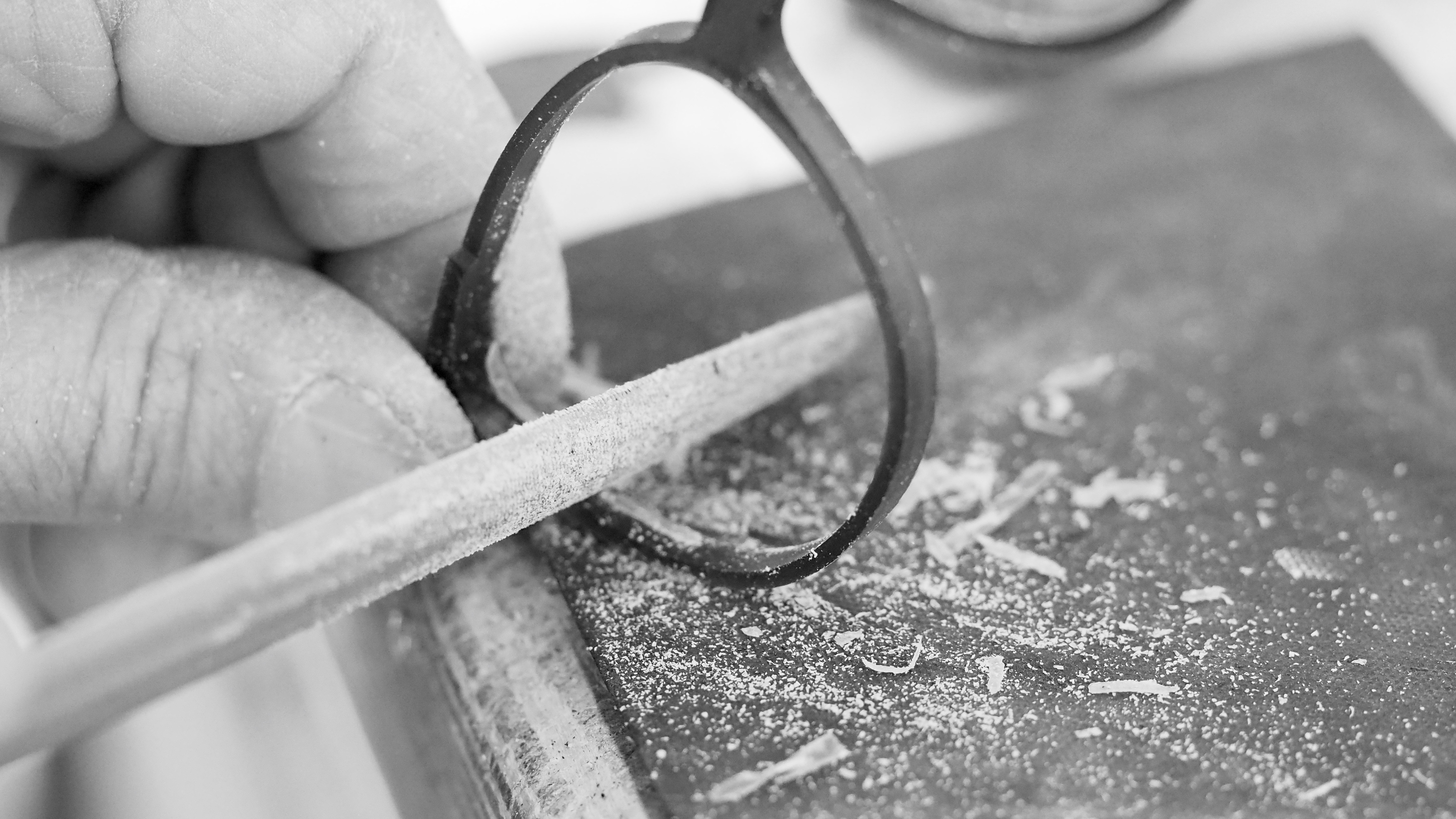- Previous page
- Back to list
-
Next page
WITH GIONATA, ON A MISSION TO DISCOVER THE TRADE OF PROTOTYPE MANUFACTURING.

“Succeeding in transforming the designer’s idea into something physical”: this is how Gionata describes what he does. A young man, with jet black hair and a tidy beard that wraps itself around his face. But the most striking thing about him is his smile. It is a genuine smile. A clear sign that he loves what he does. The Americans would see him as an example of someone in the good zone, that dimension of life where you have achieved a balance between the professional and personal aspects of your existence. But his smile is much likelier to simply be the sign of a young man who is aware that when he works, he is doing something important. And perhaps this is the realisation that allows us to do things well, with the pride of being active players in the process and a sense of humility that continuously encourages us to improve and never to stop learning.

“It’s not a job, it’s a trade” exclaims Gionata, speaking about what he does. A slight nuance. A huge difference. Seeing him at work, you get a better idea of what he means. His manual skill, the sensitivity with which he uses his tools, his ability to make something raw into a finished piece: all elements that epitomise the concept of a new craft, an industrial craft, where diversity lies not so much in what you make, but in how you make it. Is there a way of learning this craft? Practice makes perfect, trying to master the ability over and over again is the best form of training. Then, of course, you have to have a gift for what you do. Meet experienced people who are capable of transferring their know-how (rather like long ago when workshops would have an apprentice), then someone who spots these skills in you, believes in you and becomes the activator of your talent This kind of person exists in the De Rigo prototyping office. His name is Massimo Calderini and some (in fact quite a lot) of the credit for Gionata’s development goes to him.



























